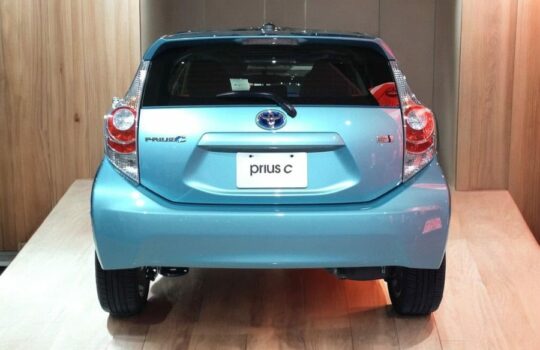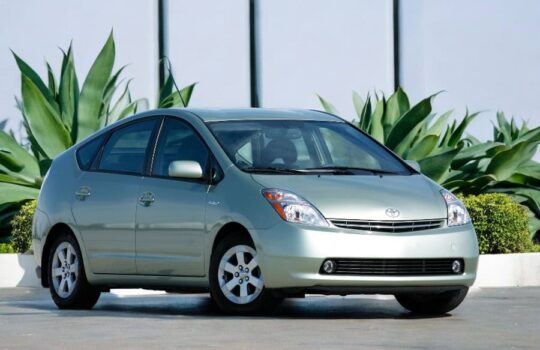Toyota Prius P0A80 Trouble Code

The hybrid vehicle battery management system generates a P0A80 code and indicates a problem with one or more weak cells within its hybrid battery pack. A Toyota specialist will use a scanner to check individual module resistance, battery voltage, and temperature.
When a battery pack declines, immediate action is essential to halt further degradation and save it from disrepair. Reconditioning batteries is an economical solution that should be considered.
Causes
The P0A80 code is generated when your vehicle’s Hybrid Vehicle Battery Management System detects an issue with its hybrid battery pack. A hybrid battery pack consists of individual cells connected in series and parallel, then stacked to form modules before powering your electric motor and other electrical systems – like those found in Toyota Prius, Camry, or Avalon models. Your powertrain control module (PCM) sends input signals to HVBMS to monitor cell charge states individually and overall pack voltage levels; should PCM detect an issue, it will set this trouble code and trigger an engine light alert!
Though there can be many causes for this code to appear, one of the primary culprits is usually improper battery care or charging habits; without proper or regular charging practices in place, batteries will lose capacity over time, leading to symptoms like loss of power or slow acceleration and ultimately leading to this code and its subsequent symptoms such as loss of acceleration power or decrease.
Problems with HVBMS sensors may also trigger this error code; these sensors measure battery temperature and voltage; if they don’t meet manufacturer specifications, this error occurs. Furthermore, extreme temperatures or overcharging could damage these sensors and cause them to fail altogether.
If you detect any of these symptoms, it could indicate that your hybrid battery needs replacing immediately. Although this repair can be costly, addressing it quickly to protect against further damage to your vehicle and ensure safety is essential. Ideally, take your vehicle to a specialized mechanic with expertise with hybrid batteries, such as Toyota agents; otherwise, reputable auto parts stores offer diagnostic scans, which may assist in diagnosing problems, although such stores will likely charge more.
Symptoms
P0A80 codes are generated when the battery management system detects cell failure within a hybrid vehicle’s battery pack and stores this diagnostic trouble code in memory. Furthermore, PCM may activate additional codes such as P0A7D for Battery Module Degradation or Hybrid Battery Pack Deterioration or P0A7F for Battery Energy Control Module Requested MIL Illumination, which may further complicate matters.
An Error Code 2 indicates there may be something amiss with the primary power source in your hybrid vehicle, meaning something could go wrong with its battery. As soon as this issue arises, it must be rectified immediately to avoid irreparable battery degradation that won’t allow for the start-up of your car anymore.
As an indicator of this problem, your Multi-Function Display (MFD) screen’s battery level indicator might display a green full battery icon before rapidly declining to 1 purple bar – the lowest level it can go.
Experienced vehicle operators might notice their hybrid car is experiencing power loss upon acceleration due to its gas engine shutting off to maintain optimal charge levels in its battery pack.
If your hybrid has been showing the P0A80 code, various free diagnostic resources can help. AutoZone, O’Reilly’s, and Pep Boys offer these services, which scan for codes to pinpoint potential issues with the vehicle and then offer solutions.
The primary cause of this warning is battery aging; hybrid batteries degrade over time, which reduces their capacity and triggers this warning. Other causes could be weak cells within a battery pack that negatively impact performance, causing symptoms or ultimately leading to the display of the P0A80 code on the screen. Finally, problems with temperature sensors could also lead to this alert being displayed.
Diagnosis
Hybrid vehicles rely on a high-voltage battery pack that supplies power to electric motors that propel the gasoline engine. This battery pack consists of multiple modules of individual cells arranged into “blocks,” sometimes combined to form larger groups. A battery management system monitors these modules’ state of charge and individual cell resistance and voltage levels; any discrepancies trigger an alarm with PCM by setting code P0A80.
This code is generally set when the high-voltage battery control module detects one or more weak modules within its pack. Damage to these weak modules could come from corrosion and age-related degradation – particularly around current connection points between batteries. Simple cleaning of bus bars that connect them may restore some life to them temporarily – though eventually, most hybrid vehicles will require replacement battery packs due to extensive mileage driven.
To diagnose this code, the technician must first clear it before performing an OBD-II scan of the battery using an OBD-II scanner. This will display each module’s state of charge and voltage and temperature readings – these must all fall within normal ranges, and module voltages shouldn’t exceed 0.2 volts from each other.
Once technicians read through the data, they should be able to pinpoint which module is faulty and when the code was set. Freeze frame data is beneficial in pinpointing problem areas, helping them narrow down possible causes for each malfunctioning module.
As with any complex automotive repair task, it is recommended that technicians consult a vehicle-specific repair manual or online database to follow proper diagnostic steps. If they feel uneasy performing this work, a licensed mechanic should be hired instead.
Repair
The P0A80 code is an alarming code indicating an issue with your hybrid battery pack. As soon as possible, address this problem to prevent further pack degradation and save money in the long run by avoiding costly replacement. Luckily, there are numerous solutions for repairing hybrid battery packs.
The Powertrain Control Module (PCM) monitors voltage and resistance readings from individual battery cells to ascertain their overall condition. If any reading deviates from its normal range, trigger a fault code and inform battery management that one or more weak cells have failed.
P0A80 codes may appear for several reasons. One could be malfunctioning fans that aid battery cooling, which can lead to overheating; when this occurs, the PCM interprets this as weak cell failure and triggers the check engine light. Furthermore, battery cells may become damaged due to age, usage, environmental factors, and trigger check engine light illumination. Finally, failure may occur if proper cycling and charging procedures aren’t followed regularly.
P0A80 codes may also indicate that the PCM is receiving invalid signals from the battery management system, perhaps due to misinterpretation or an issue with itself or even due to malfunction of temperature sensors in your car, leading it to set this code.
A faulty replacement battery or improper installation can set off this code. This is because its size, strength, and internal resistance must match up perfectly with that of its modules.
Although addressing this problem on your own is an option, for optimal results, it is wise to visit a certified hybrid mechanic with all the appropriate knowledge and tools necessary for handling battery-pack cars. In addition to being experts on hybrid cars, these professionals also possess diagnostic scanners and powertrain repair manuals for optimal work on these hybrid cars – which may come in handy should replacement not go as planned. They may even offer you warranties on batteries should replacement fail!







